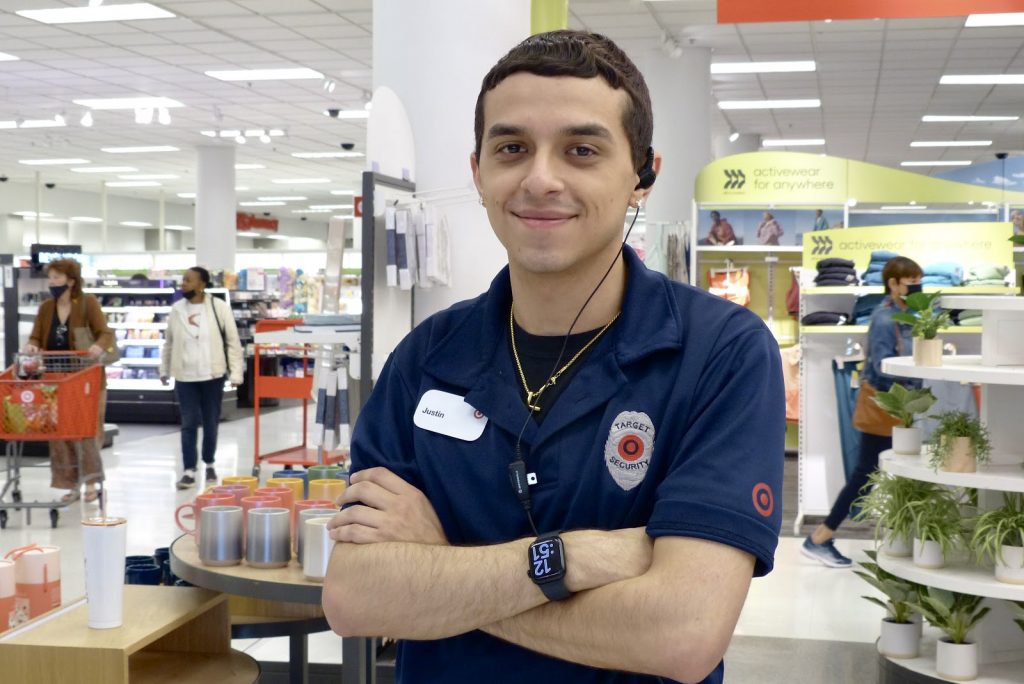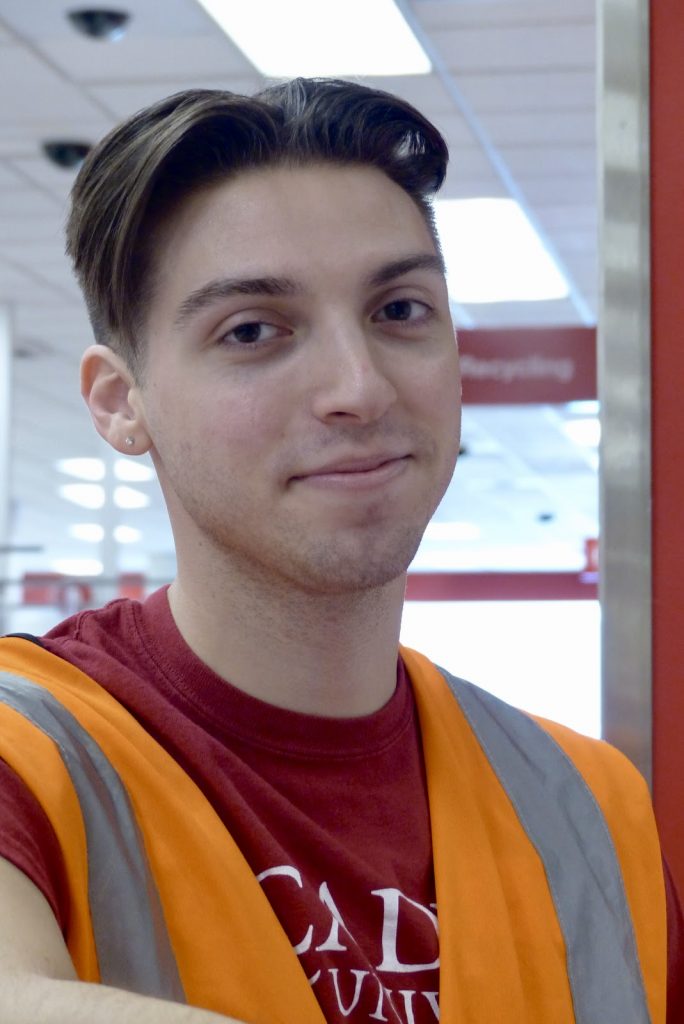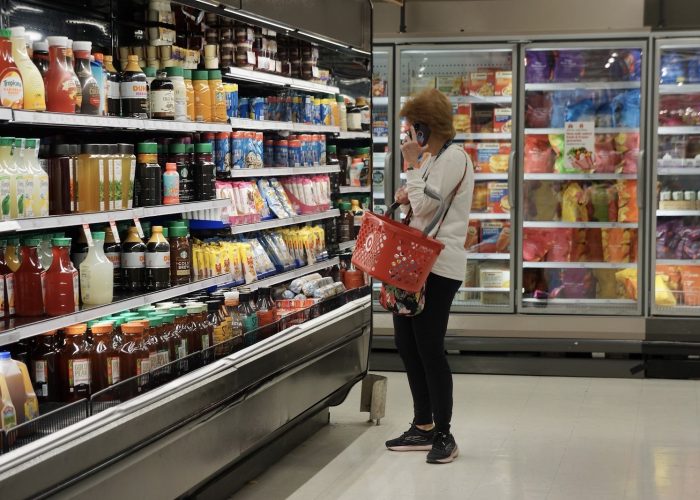How Target gets you to Expect More but only makes it seem like you Pay Less.
Clear correlation between quality of shopping experience and prices rather than quality of clothes and prices
Have you ever blacked out in a Target? It’s happened to the best of us. Whether you’re a loyal Target shopper or it’s just the most likely to have the 2-3 items you need, you find yourself in a Target. You’ve walked under the massive set of red concentric circles and passed through the sliding doors. You lay your eyes on that irresistible dollar section,only to be neatly directed into the alluring beauty department, when across the aisle you spot the cutest effing sweater you’ve ever seen. Next thing you know, you’re walking to your car with two full plastic bags and a receipt longer than your arm. You wonder how a list of only shampoo and conditioner could turn into a whole new set of porch cushions, a pair of shoes, a reusable water bottle, 2 sweaters, wireless headphones, and an airfryer. Despite normally being quite responsible or frugal with your money, you may feel swindled by how easily you give in to the excellent marketing of their products. But even then, in that moment of shame, you’re immediately comforted by the justification that these products are worth it, and you’re not the only one. This semblance of high quality is what puts Target into a category all on its own.
Target’s slogan of “Expect More. Pay Less” perfectly captures their ability to market themselves as a store that sells high quality products for an affordable price. However, like many retail slogans, the followthrough of their promise is questionable. While they stock a combination of fan favorite name brand products and in-house Target brands, it can be argued that the quality can be found in the shopping experience rather than the products themselves. In a HuffPost article by Caroline Bologna, the appeal of shopping at Target is broken down into a few key elements. Bologna points out that Target’s most dedicated fans are parents as displayed by the endless mommy blogs found all over the internet, and for them, shopping at Target is like an escape from the chaos of being a parent. Beyond the bright, clean layout of the store, the convenience of being able to stock the whole house in one shopping trip is a relief, not to mention all the sections marketed directly towards women between the ages of 18-44. But on top of all of that, Target’s promise of quality comes almost exclusively from it’s excellent visual merchandising. In Target’s Abington location, you’ll notice that almost the entire first floor is taken up by sections of beauty products, womens apparel, shoes, swimwear, intimates, and accessories. Knowing their primary customer, Target makes sure that as soon as you enter you’re offered both low cost products and perfectly curated micro trends. The aisles are wide and well lit, the bright red and white color scheme creates a bouncy atmosphere and the smell of Starbucks coffee wafting from the cafe all add to the ambiance of high quality. It’s no wonder people lose their senses and overspend in that type of space!
To take a closer look at Target’s irresistible charm, I spoke to a former Target employee to gain some insight on how they establish such a loyal customer base.
Bob Seefried worked for Target on and off between the years of 2017 and 2020. He shared with me some employee protocol such as only referring to customers as “Guests”; using the word ‘customer’ was strictly prohibited; “You would get in trouble if you referred to the shoppers as customers; it’s always a guest.” The job titles of the employees also run in the same vein; a cashier is a “guest advocate” and a manager is a “Service and Engagement Team Leader”. By extending that guest-centered mindset to the purpose of the employees, they solidify their manifesto of high expectations. Then there’s the simple trick of putting all seasonal decor in the very back so even a once-a-season shop can result in big spending. Seefried also noted that he became familiar with Target regulars whom he said he’d see at least once a week if not every other week. They’d always happily make the same joke about how they came in “for just one thing” even though both the employees and the guest know damn well the receipt will always reflect otherwise.
Target started in Minneapolis in the 1960s, by 1999 Target.com had established their stake in the eCommerce market before most other retailers. Today there’s around 2,000 Targets spanning every US state. In fact 75% of Americans live within a ten mile radius of a Target. Take the Philadelphia area as an example. There are 7 different Target locations within a ten mile radius of Arcadia University (located in the Philadelphia suburb of Glenside). Within an hours drive of the campus, you can find 20 target locations and you’ll find plenty more along the major highways going in and out of the city. On Arcadia’s campus, I brought up Target with friends and classmates, the response of which was always a resounding YES. Their replies are littered with phrases like “better than Walmart ”, “can’t help myself”, “I just like being in there”, and “they have everything I need”. Within the city itself, Target has opened three of their new small-format stores within the last five years. Normally, one of these big box stores opening in urban communities can threaten the existing business, but Target has actually brought a huge increase of shoppers to the surrounding vicinities and Target continues to challenge what we think of as a Big Box store.
When it comes down to it, Target doesn’t need to worry about whether or not their in-house brands stand the test of time because their shopping experience proves itself time and time again. Even if Target products lose their sparkle once we’ve left the store and our money has left our bank accounts, they’ve mastered the ability to induce that retail dopamine rush, just by stepping inside.
Seeing Past Red
When you think of the color red, what comes to mind? Love? Anger? Emergency? All of those would make sense. A quick search of color psychology reveals what we already know from the world around us. Red is stop signs and firetrucks, used to communicate a sense of urgency; a need to stop and pay attention. So it’s not surprising that some of the biggest brands in our culture use red as the signature color; Target, CocaCola, McDonalds, Netflix, the list goes on. In the case of Target, the red of their concentric circle logo acts as a stop sign and an instigator of high energy. It’s no coincidence that bright lighting and firetruck red create a vastly different shopping experience than that of Walmarts blue accents and dim lighting.
When I entered Target last week, my plan was to approach some customers, perhaps ask them about their shopping experience or if they wouldn’t mind me taking a candid photo for a school project. But as I walked around the store, it became clear that the plan would be disrupting something. I had the feeling that photographing someone during their Target shop was a serious overstep and despite being in a public place, everyone seemed to be participating in their own private ritual. I had thought that noon on a Monday wouldn’t be the busiest time but I clearly didn’t account for all the stay at home moms and retired women.

I was able to talk to some employees while I was there and I asked them their favorite and least favorite about being a Target employee.



Click through to see the customers and their children going about their Target endorsed afternoon.











